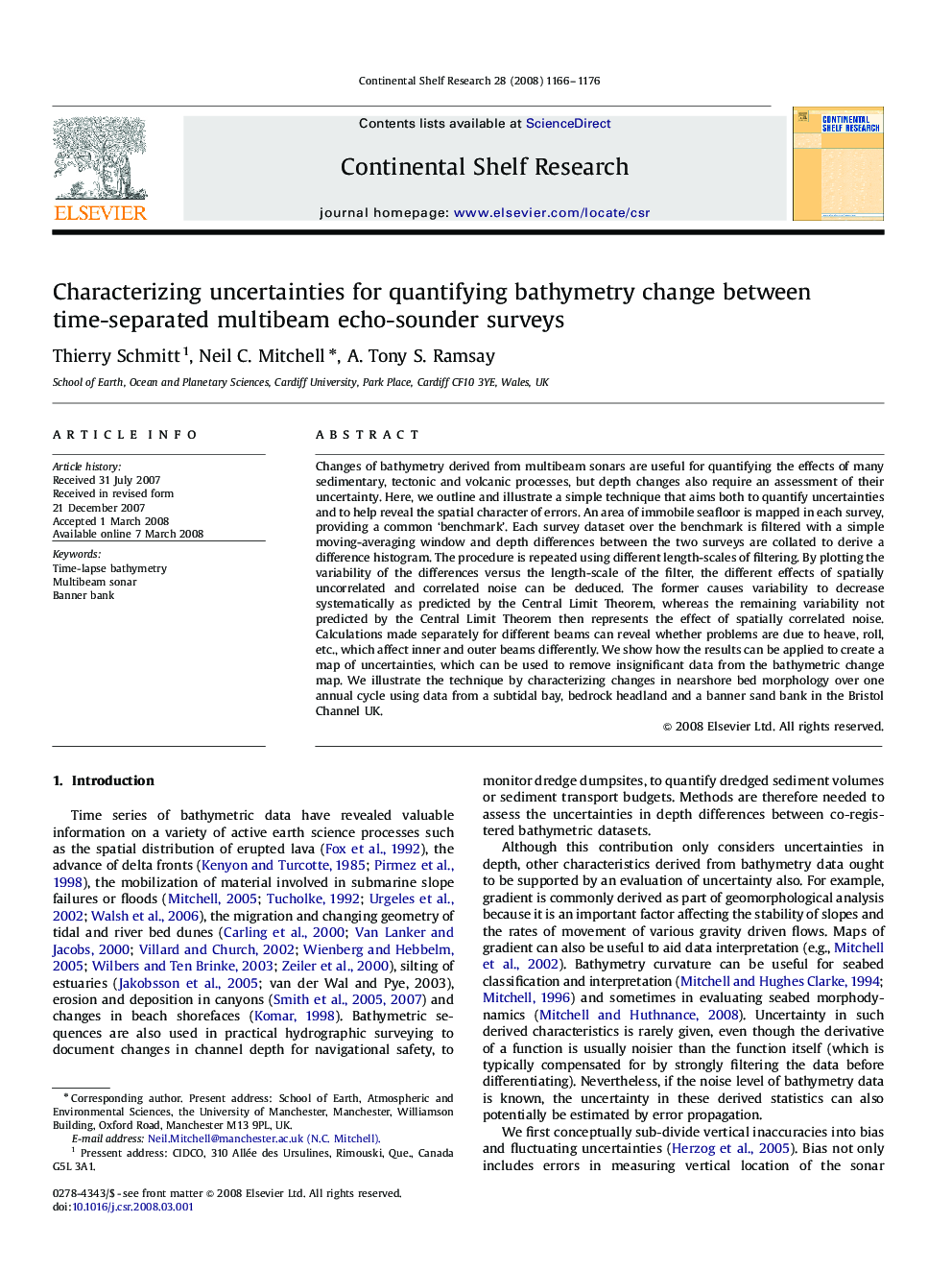| Article ID | Journal | Published Year | Pages | File Type |
|---|---|---|---|---|
| 4533629 | Continental Shelf Research | 2008 | 11 Pages |
Changes of bathymetry derived from multibeam sonars are useful for quantifying the effects of many sedimentary, tectonic and volcanic processes, but depth changes also require an assessment of their uncertainty. Here, we outline and illustrate a simple technique that aims both to quantify uncertainties and to help reveal the spatial character of errors. An area of immobile seafloor is mapped in each survey, providing a common ‘benchmark’. Each survey dataset over the benchmark is filtered with a simple moving-averaging window and depth differences between the two surveys are collated to derive a difference histogram. The procedure is repeated using different length-scales of filtering. By plotting the variability of the differences versus the length-scale of the filter, the different effects of spatially uncorrelated and correlated noise can be deduced. The former causes variability to decrease systematically as predicted by the Central Limit Theorem, whereas the remaining variability not predicted by the Central Limit Theorem then represents the effect of spatially correlated noise. Calculations made separately for different beams can reveal whether problems are due to heave, roll, etc., which affect inner and outer beams differently. We show how the results can be applied to create a map of uncertainties, which can be used to remove insignificant data from the bathymetric change map. We illustrate the technique by characterizing changes in nearshore bed morphology over one annual cycle using data from a subtidal bay, bedrock headland and a banner sand bank in the Bristol Channel UK.
